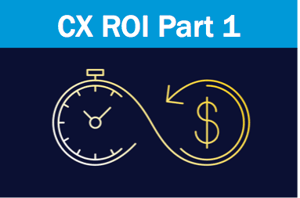Customer Experience: The perfect framework to begin thinking about ways to plan, measure and improve customer interactions with your organization.
 Even before the “Four Ps” of marketing (Product, Price, Place and Promotion) expanded in the 1980s to reflect the impending shift to a knowledge-based economy (People, Process and Physical Evidence), there was widespread recognition that how someone feels about an organization is driven in large part by how they’ve been treated.
Even before the “Four Ps” of marketing (Product, Price, Place and Promotion) expanded in the 1980s to reflect the impending shift to a knowledge-based economy (People, Process and Physical Evidence), there was widespread recognition that how someone feels about an organization is driven in large part by how they’ve been treated.
Customer experience is the sum of all experiences a customer has with an organization, over the duration of their relationship with that organization.
Introduced in the late 1990s, the concept of “customer experience” was the perfect framework to begin thinking about ways to plan, measure and improve these. An organization’s ability to cost-effectively deliver an experience that positively differentiates it from the competition in the eyes of its customers boosts top- and bottom-line revenue through increased customer spending, greater customer loyalty, and reduced costs for service and acquisition. What’s not to love?
Customer experience management: The next competitive battleground.
There’s no argument that understanding customer experience is critical. In fact, 95% of senior business leaders identify customer experience management as the next competitive battleground. At the same time, over half state that “Lack of measurement is a significant obstacle to improving Customer Experience.”
ROI on improvements to customer experience can be elusive; oftentimes, the discipline and data required to measure and understand what works is short-cut, and investments are made without a clear understanding of return. One executive perspective is shaped by talk about “soft” metrics such as satisfaction and brand preference; another – the financial view – is rooted in profit and loss, short-term expense and cost containment.
That’s why customer experience management and assessment is so critical. Only by looking at experience through the lens of ROI can organizations reach the consensus needed to drive the top-down initiatives critical for driving customer experience change.
Measuring customer experience
At MCorp Consulting, we call this assessment process Customer Experience Mapping. Essentially, we track aspects of the experiential “journey” your customers take through the Customer Relationship Lifecycle unique to your business, and the touchpoints and interactions encountered along the way.
Experiences are defined at those the places where companies interact with and “touch” customers. Their touchpoints.
Future revenue is affected – either positively or negatively – at every single touchpoint (or interaction) between your organization and your customers.
Assessments are typically done through a variety of research and analytical methodologies, including in-person and phone interviews, surveys, and driver analysis to tie experience to actual and desired behaviors. This level rigor of also means that the Customer Experience Mapping process has the potential to be both involved and resource intensive.
So how can you assess and prove ROI before you start? In Part 2 of Proving ROI on Customer Experience we present four “experience investment” lenses to help you plan, measure and improve interactions with your customers, and prove significant ROI – before you invest. (Continue to Part 2…)

